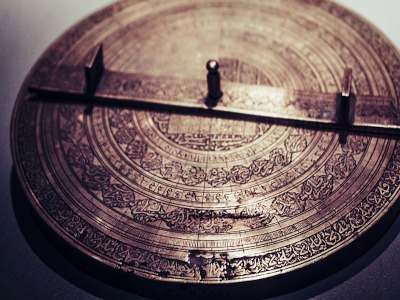Astronomy has been important for hundreds of generations, and one of the outputs of astronomy is timekeeping. One of the ways to keep time is by using calendars. They were necessary for religious practices, agriculture, and governance. The term calendar comes from the word calends, which meant in the Roman calendar the first day of the month. It is also related to the word calare, which means ‘to call out’. It refers to the new moon of the month. The term might also come from the Latin word calendrium, which meant ‘account book, register’. The Latin version was taken over by the French, and from there to English.
Archaeologists have found the most ancient calendars from Neolithic times. Back then, they used more natural ways to keep track of time. For example, they used the day, the solar years, the seasons, and the lunations. Most of the pre-modern calendars are lunisolar calendars. Lunar calendars fall between the solar year and lunar month. The seasonal calendars, as the name suggests, fallow the changes in the environment. The lunar and solar calendars were based on the observations. Most modern calendars are solar. The first calendars are from the Bronze Age. It is also the time when writing started to develop. In 2013, scientists found ancient evidence of a calendar system that might be older than 10,000 years. It is considered so far the oldest calendar. It was found in Warren Field, Aberdeenshire. There is also an Ishango bone that probably has astronomical markings. These markings might be lunar markings, and they date back to 20,000 BC. The next earliest calendar is the Sumerian calendar, followed by the Egyptian, Assyrian, and Elamite calendars. There are also some other examples of calendars, like the Jewish, Hijri, Sikh, Mayan, Aztecan, Hindu, Hellenic, Julian, or Gregorian calendars.
As already mentioned, the oldest calendar is from Scotland. This calendar is made out of 12 pits, and in them are wooden posts. These were supposed to represent the months of a year. The pits for mapping the moon phases are aligned with the south-eastern horizon. The wooden posts were pointed towards the hill from where the sun rose. This calendar was probably used by the hunter-gatherers so that they could track the seasons. So, for example, that they could know when the bird migration started. The other ancient calendar might be Stonehenge, because it also aligns with the solstices. Stonehenge was built around 3000 BCE. Unfortunately, we can’t be sure that these were used as calendars because we don’t have written records from this time.
The first civilizations were formed between the Tigris and Euphrates, also known as Mesopotamia. These civilizations were created around 4000 BC. The ancient civilizations used lunar patterns to keep track of time. They divided their calendar into 12 months. They started their months with the first sight of a crescent moon. Due to the fact that the year was 354 days long. In order to synchronize the solar and lunar years, the Babylonians came up with intercalation. This meant that, when necessary, they were able to add an extra month. Babylonians also used a seven-day-a-week system.
Like many ancient civilizations, the Egyptians kept track of time based on the planting and harvest seasons. Egyptians based their calendar on the Nile’s yearly floodings. Every year between May and August, the Nile is flooded, according to the Gregorian calendar. The Egyptians divided their calendar into three seasons. The flood season was from June to September and was called Akhet. From October to January was the ‘Emergence’ season, also known as Peret. And finally, from February to May was the low water season, or Shemu. During the Old Kingdom, Egyptians also had something called a civil calendar because, on the other calendar, it was difficult to mark other events. The civil calendar is probably based on the movement of Sirius. The civil calendar had 12 months on 30 days in a month and also an additional month of five days.
There were a lot of different calendars and ways of marking the time. The early Roman calendars were lunar calendars. They tracked the moon’s development over 29.5 days. So, they lost around 10 to 11 days in a year. At the same time, they also used the nundinal cycle. This cycle had eight days in a week, and every week ended with a market or a festival. At the end of the Roman Kingdom and at the beginning of the Roman Republic, their calendar was influenced by the Greek calendar. The Greek calendar divided the year into 12 months, and a month had 29 and 30 days. The Romans added to the third, fifth, seventh, and tenth months 31 days.
In 46 BC, Julius Caesar introduced the Julian calendar. With this calendar, they had to make some changes. In the Julian calendar, there was a leap year every fourth February. The Julian calendar remained mostly the same, but there were miscalculations in the length of the solar year by 11 minutes. So, by the year 1582, Pope Gregory XIII noticed that Easter was not in sync with the spring equinox. To fix this problem, the Pope launched a new calendar on October 4, 1582. This was set to be the next day, October 15, and because of this, the calendar jumped ahead by 10 days. Catholic countries made the changes immediately. For Protestant countries, it took a century. Russia made the change in 1918.
Sources:
https://mathshistory.st-andrews.ac.uk/Astronomy/bhistory/
https://en.wikipedia.org/wiki/History_of_calendars
https://en.wikipedia.org/wiki/List_of_calendars
https://historyfacts.com/world-history/article/the-history-of-calendars-in-7-facts/
https://www.calendar.com/history-of-the-calendar/

